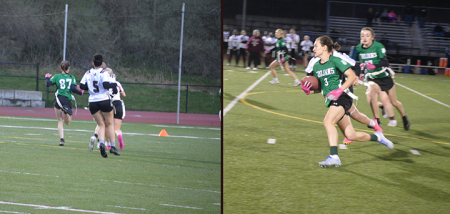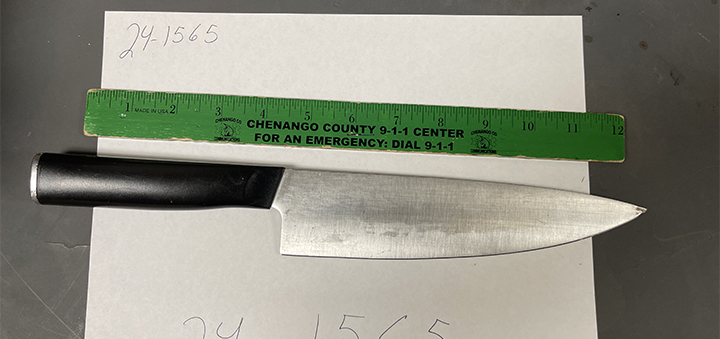The Deer Season After Deer Season: Muzzleloader Hunting
Published:
November 30th, 2017
By:
Meagan Schulz
Frank Speziale photo
CHENANGO COUNTY – As it happens every year, firearms season for deer flies by and before you know it, the season is over. While many hunters were successful, some hunters may have ended the season without filling a tag. Luckily, there is the late muzzleloader season in the Southern Zone.
By dishing out an additional $15 (for NY residents, $30 for non-residents), a hunter can obtain an either sex muzzleloader tag. This tag is good for wither a buck or a doe in any WMU in the state. If the hunter did not use their regular season buck tag once they purchase the muzzleloading privilege, that tag also becomes an either sex tag only for the muzzleloading season.
Again, the hunter must purchase the additional privilege in order to have their regular season tag be valid as an either sex tag during the muzzleloading season.
Other hunters may have been successful early in gun season and decide that they want to be able to get out in the woods again. The muzzleloader season allows that hunter another 10 days of deer hunting.
This late season is also a bowhunting season so hunters may use their vertical bows to harvest deer with their bow/muzzleloader tags, provided that they did not fill those tags already during the early bow season. Finally, hunters with crossbows may use their crossbows during the muzzleloading season as long as they have purchased their muzzleloader privilege and have tags left.
When it comes to muzzleloader hunting, hunters have a couple options in terms of the muzzleloaders themselves. There are flintlock rifles that use a small pan on the outside of the breech where a piece of flint creates a spark to ignite the powder in the firearm to make the gun go off.
The next step in the evolution of muzzleloaders were rifles that use a percussion cap primer instead of the flint and loose powder needed for flintlocks to operate. This helped cut down on the powder in the flashpan getting spilled, resulting in angry hunters who couldn’t shoot at deer when given the opportunity.
Both flintlock and percussion cap rifles have one major downside, they can be a pain to clean because you cannot clean the breech area of the firearm that well.
Inline muzzleloaders have changed the muzzleloader industry by allowing the hunter to remove the breech plug and to be able to clean the entire length of the barrel. This is crucial for the maintenance of muzzleloaders as the spent powder is often corrosive to the inside of the barrel, which decreases accuracy and shortens barrel life.
In addition to the improvements in the firearms, there have been great improvements to the components used when muzzleloader hunting also. There are now powder substitutes that contain little or no sulfur, which reduces the corrosive effects the burnt powder has on the barrel.
They also have pelletized powder that make it easier for hunter to load their muzzleloader after a shot instead of having to measure the loose powder they put into the barrel. The pelletized powder generally is less accurate than loose powder because the pellets can chip and lose some of the powder making them slightly different in the amount of powder that is put in the gun.
For most hunting situations, the slight difference in powder pellets is not noticeable. The projectiles used for muzzleloaders have also changed. Early muzzleloaders were loaded with a round ball of lead wrapped in a cloth patch. Due to the spherical shape of the lead, they did not always fly straight and limited the hunter’s effective range. With the advent of conical shaped bullets, accuracy improved. The pointed and elongated bullet promoted better stability in flight resulting in improved range.
I like to compare the bullet change to like throwing a football. A football that is thrown in a nice spiral will travel farther than one that is thrown sideways. The new bullet design lead to sabots, or sleeves, that hold the bullet while traveling down the barrel but then release the bullet once it leaves the barrel. This gets the bullet spinning and then drops away to let the bullet fly on its own.
Even this design has been improved to have bullets with plastic gas seals on the bottom so the hunter doesn’t need to fumble with trying to get the bullet into the sabot when reloading. This saves them time and can help result in a faster follow-up shot if one is needed.
So if you are a hunter that hasn’t had a successful season and you want to have another chance to fill a tag or just want to be able to spend 10 more days in the woods, consider muzzleloader hunting.
Many years, the deer start to come out to feed during daylight hours as it is getting cold and they need to increase how often they feed in order to stay warm. Also, snow is often on the ground, making the deer stick out like a sore thumb in the woods.
Author: Meagan Schulz - More From This Author
Comments






